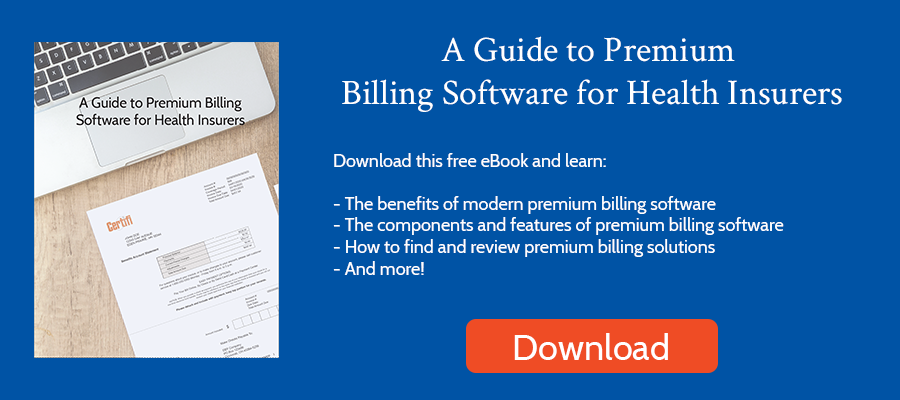The typical health insurer has many competing technology priorities. Insurers have traditionally spent a considerable amount of labor resources on claims administration. To cut costs, insurers have invested in solutions to digitize and automate that process. Care management solutions have gained favor and payer investments. Member service teams desire digital member engagement platforms and tools to improve the member experience.
As these tools have evolved, insurers have increased investments in them. Compared to investments in emerging technology like cloud platforms and artificial intelligence, billing software upgrades aren’t sexy.
But that doesn’t mean billing solutions shouldn’t be a priority. Here’s why modernizing health insurance premium billing software should be a strategic priority
It Impacts Member/Group Satisfaction
For many of your members – whether it’s individuals buying coverage on an ACA exchange, a Medicare Advantage plan, or employers paying premiums for their employees – their premium bill is their most frequent interaction with your brand. Poor billing practices can negatively impact their brand experience.
For example, less sophisticated legacy systems and manual processes can lead to billing issues, especially if retroactive adjustments are necessary. If members or groups consistently receive incorrect or confusing bills, frustration can set in. That frustration leads to member churn.
Modernizing health insurance premium billing software can improve member satisfaction while driving down billing-related calls. Plus, it can automate internal processes to save time. Take, for example, check payments you receive without a payment stub. It likely takes several minutes or longer to research which member sent the check.
Modern software, like Certifi, leverages artificial intelligence and machine learning to read the check information, then suggest which member likely sent it. An employee reviews the suggestion and decides which member sent the payment. The machine learning records the decision, which improves future recommendations.
The result? Users have indicated they can process as many as four times as many checks. Plus, accuracy is improved, leading to fewer dissatisfied members and call center calls.
You’ve Neglected It For Years
Insurers have not prioritized modernizing their billing solution. They’ve likely swapped out their core administration system, introduced new member-facing technology, and built member portals and apps. That’s further compounded by a consolidating market, with some insurers leveraging multiple billing platforms left over from past mergers and acquisitions.
As a result, one or more legacy billing systems tie up internal resources to maintain. Even worse, these legacy systems usually aren’t parameter-based, so making billing configuration changes results in lengthy delays.
Because legacy systems can be cumbersome to maintain, in the past decade, many health insurers selected billing modules bundled with their core administration solution. They generate invoices but lack basic features – like automated delinquency management or integrated online payment portals – that lead to wasted labor.
It’s Likely Manual and Error-Prone
Speaking of manual processes, by using dated or limited premium billing software health insurers waste hours on tasks they could automate.
Take delinquency management as an example. Health plans using legacy systems or limited core admin billing modules lacking integrated delinquency management rely heavily on manual processes. The billing team is likely exporting delinquent account information for a mail merge that enables print notifications. Sending email delinquency notifications may be even more complicated or non-existent. That leads to more poor collection practices that don’t maximize revenue.
Modernizing Health Insurance Premium Billing Software is Easier Than You Think
Gone are the days of large, all-in-one software solutions that take years to implement. Modern software solutions rely on modern integration methods – like single sign-on (SSO) or APIs – that simplify data exchange. Plus, they’re configurable, simplifying setup and future new product releases.
That typically means integrating with an upstream enrollment platform, downstream accounting platform, and other systems that feed configuration parameters. Users typically log into an insurer’s member portal, and SSO delivers them to the billing provider’s billing portal to view account history, set up autopay, or make a one-time payment. Insurers can use APIs to pull billing information into a member portal, providing a seamless user experience.
Implementing premium billing software can be measured in months, not years. A composable solution strategy with separate enrollment, claims administration, clinical management, member engagement, and other solutions delivers a more robust enterprise technology stack. Even better, insurers can quickly exchange underperforming point solutions for a best-in-class total solution.
Certifi’s health insurance premium billing and payment solutions help healthcare payers improve member satisfaction while reducing administrative costs.



